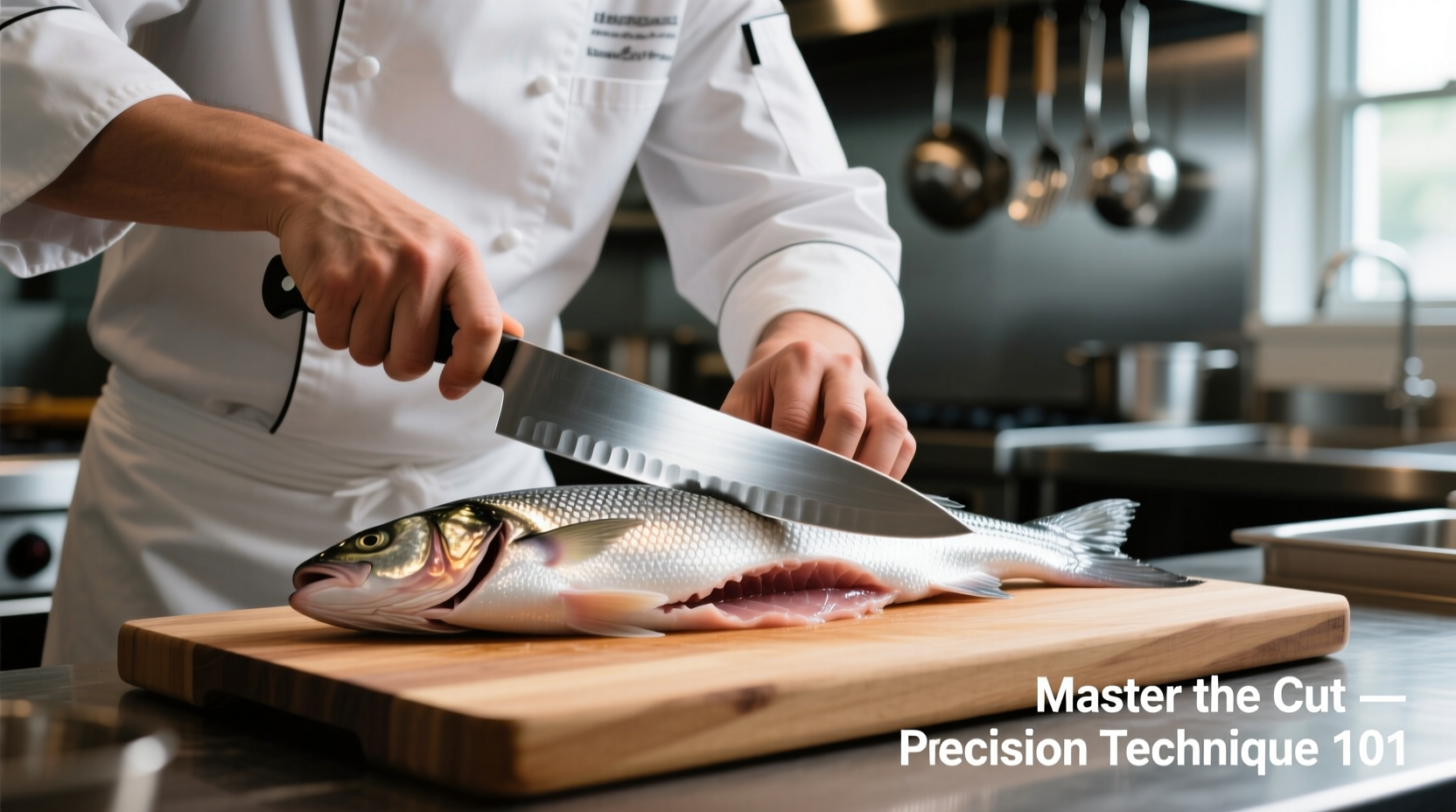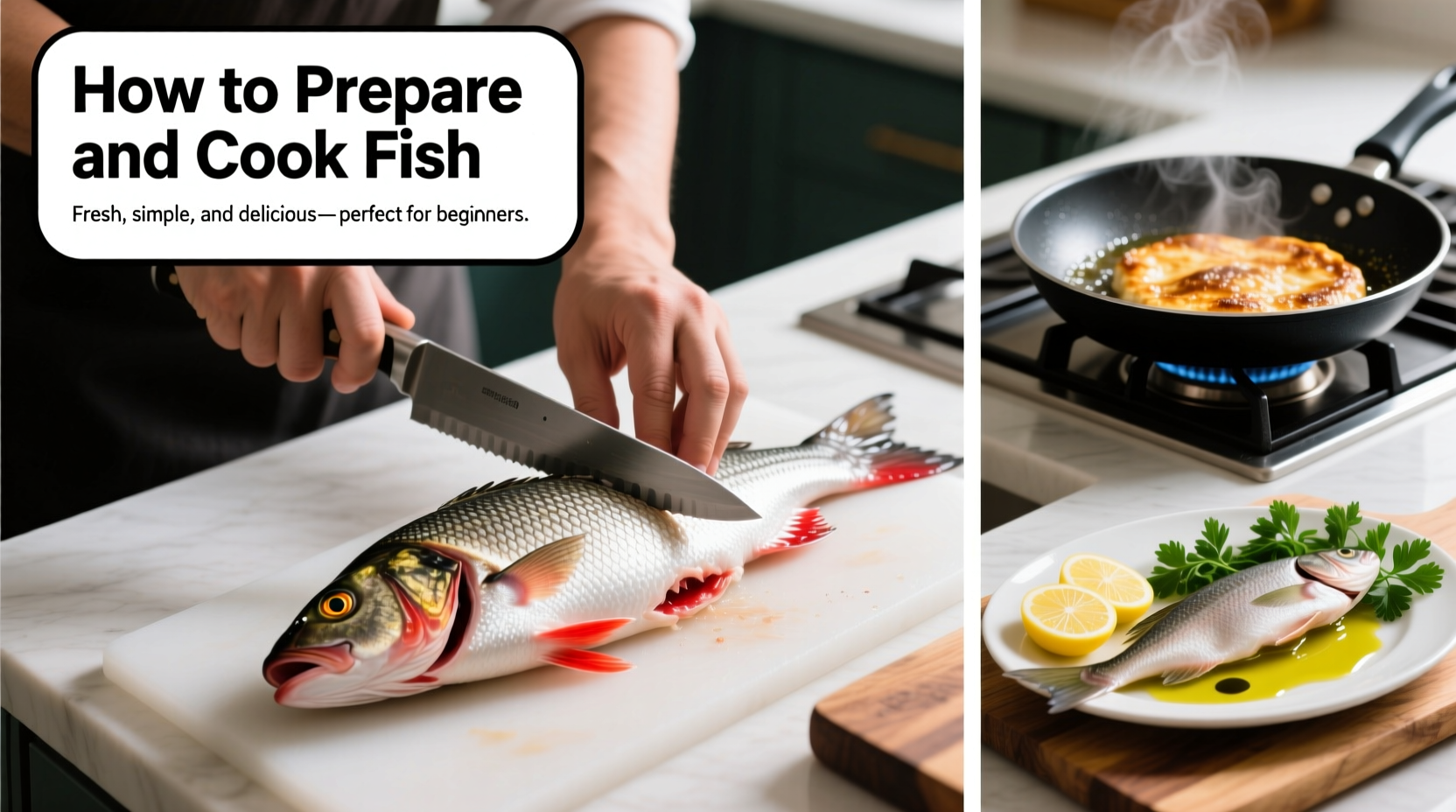Learn professional techniques to prepare and cook fish perfectly every time with this comprehensive guide. Discover how to select fresh fish, properly clean and fillet it, and master four essential cooking methods that guarantee moist, flavorful results. You'll get FDA-approved safety guidelines, precise temperature recommendations, and visual doneness indicators that eliminate guesswork from fish preparation.
The Complete Guide to Preparing and Cooking Fish Like a Pro
Whether you're a beginner or looking to refine your seafood skills, understanding proper fish preparation transforms ordinary meals into restaurant-quality dishes. Fish requires different handling than other proteins due to its delicate texture and quick cooking time. This guide walks you through each critical step with actionable techniques backed by culinary science.
Selecting Quality Fish: What to Look For
Start with the freshest fish possible. At the market, look for these freshness indicators:
- Clear, bright eyes (not cloudy or sunken)
- Bright red or pink gills
- Firm flesh that springs back when touched
- Shiny, tightly adhered scales
- Sea-like smell (not overly fishy or ammonia-like)
For sustainability, consult the Monterey Bay Aquarium Seafood Watch guide which provides region-specific recommendations. Wild-caught salmon from Alaska and US-farmed rainbow trout typically earn "Best Choice" ratings for both environmental impact and nutritional value.

Safe Handling and Storage Practices
Fish spoils faster than other proteins, making proper handling critical for food safety. Follow these FDA guidelines from the Food Code Chapter 3:
- Keep fish refrigerated below 40°F (4°C) at all times
- Store on ice in the refrigerator for optimal freshness
- Use within 1-2 days of purchase for whole fish, 1 day for fillets
- Never thaw fish at room temperature—use refrigerator thawing or cold water method
- Clean all surfaces and utensils with hot, soapy water after handling raw fish
Essential Preparation Techniques
Proper preparation ensures even cooking and optimal texture:
Scaling and Gutting Whole Fish
Place the fish on a cutting board over a sink. Using a fish scaler or the back of a knife, scrape from tail to head to remove scales. Make a shallow cut from anus to jaw along the belly, remove innards, and rinse cavity thoroughly with cold water. Pat completely dry with paper towels before cooking.
Filleting Fish
Position the fish sideways. Make a cut behind the gills down to the backbone. Slide your knife along the backbone toward the tail, keeping the blade against the bones. Flip and repeat for the other side. For skin-on fillets, place skin-side down and slide the knife between skin and flesh while holding the skin taut.
| Cooking Method | Best Fish Types | Recommended Temp | Cooking Time |
|---|---|---|---|
| Pan-Searing | Salmon, Tuna, Halibut | Medium-high heat | 3-4 min per side |
| Baking | Cod, Haddock, Tilapia | 400°F (200°C) | 10-12 min |
| Grilling | Salmon, Swordfish, Mahi-Mahi | Medium heat | 8-10 min |
| Poaching | Delicate fish, Smoked fish | 160-180°F (70-80°C) | 8-10 min |
Mastering Four Cooking Methods
Pan-Searing for Perfect Crispy Skin
This technique works exceptionally well for salmon, sea bass, and other fish with edible skin. Pat the fish completely dry—moisture prevents proper browning. Heat a thin layer of oil in an oven-safe skillet until shimmering. Place fish skin-side down with space between pieces. Press gently with a spatula for 30 seconds to prevent curling. Cook undisturbed for 3-4 minutes until skin crisps. Flip and finish in a 400°F oven for 2-3 minutes.
Baking for Hands-Off Perfection
Baking requires minimal attention while delivering consistent results. Preheat oven to 400°F. Place fish on a parchment-lined baking sheet. Brush with olive oil and season. Bake until the internal temperature reaches 145°F at the thickest part, or until the flesh flakes easily with a fork. For added flavor, top with lemon slices, fresh herbs, or a simple sauce before baking.
Grilling Without Sticking
Prevent sticking by ensuring your grill grates are clean and well-oiled. For delicate fish, use a fish basket or aluminum foil with holes poked through. Grill over medium heat with the lid closed. Cook for approximately 8-10 minutes total, flipping halfway through. Fish is done when it reaches 145°F internally and releases easily from the grates.
Poaching for Delicate Flavors
Poaching preserves moisture in lean fish like cod or sole. Create a flavorful poaching liquid with water or broth, aromatics (onion, celery, herbs), and acid (lemon juice or vinegar). Heat liquid to 160-180°F—never boiling. Gently add fish and maintain temperature for 8-10 minutes until opaque throughout.
Doneness Indicators: Beyond Guesswork
Undercooked fish risks foodborne illness, while overcooked fish becomes dry and tough. Use these reliable indicators:
- Internal temperature: 145°F (63°C) at thickest part (USDA standard)
- Visual cue: Opaque throughout with slight translucency in center for medium
- Texture test: Flakes easily with fork but maintains structure
- Time guideline: Approximately 10 minutes per inch of thickness
Remember that fish continues cooking after removal from heat (carryover cooking). Remove fish from heat when it's slightly less done than your target to account for this.
Avoid These Common Fish Preparation Mistakes
Even experienced cooks make these errors that compromise fish quality:
- Skipping the dry step: Moisture prevents proper searing—always pat fish dry
- Overcrowding the pan: Causes steaming instead of searing—leave space between pieces
- Touching too often: Prevents proper crust formation—let fish cook undisturbed
- Using dull knives: Crushes delicate flesh during preparation—keep knives sharp
- Overcooking: Fish cooks quickly—check early and often
Seasoning Strategies for Maximum Flavor
Fish pairs beautifully with simple seasonings that enhance rather than overpower. Before cooking, apply salt 15-20 minutes ahead to allow penetration. Add delicate herbs like dill or parsley after cooking to preserve freshness. Acidic elements like lemon juice or vinegar brighten rich fish like salmon. For stronger fish like mackerel, pair with bold flavors like capers, olives, or spicy sauces.











 浙公网安备
33010002000092号
浙公网安备
33010002000092号 浙B2-20120091-4
浙B2-20120091-4